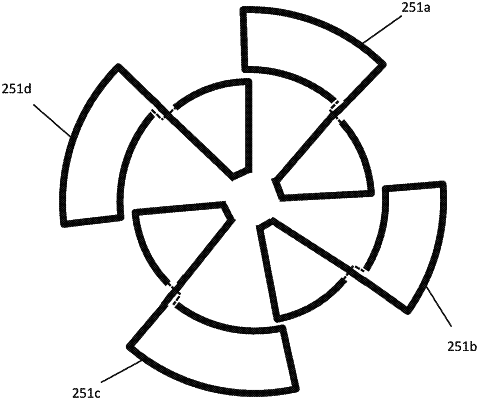| CPC G01D 5/225 (2013.01) | 4 Claims |

|
1. A rotary position sensor comprising a first member and a second member, one of the first and second members having a transmit aerial and a receive aerial and the other of the first and second members having an intermediate coupling element,
the transmit aerial comprising at least one conductive winding arranged so that alternating current flowing in the at least one conductive winding generates a transmit alternating magnetic field,
the receive aerial comprising a conductive winding arranged in a layout having a first set of current loops and a second set of current loops arranged so that current flowing in the conductive winding flows in a first rotational sense in the first set of current loops and in a second rotational sense opposing the first rotational sense in the second set of current loops, and
the intermediate coupling element comprising a conductive material arranged in a pattern such that the electromotive force induced in the conductive winding of the receive aerial by the transmit alternating magnetic field varies in dependence on the relative rotary position of the first and second members,
wherein the pattern of the intermediate coupling element and the layout of the first set of current loops and the second set of current loops are mutually arranged such that any electromotive force induced in the first set of current loops by a background alternating magnetic field is substantially balanced by electromotive force induced in the second set of current loops by the background alternating magnetic field independent of the relative rotary position of the first and second members;
wherein the conductive material of the intermediate coupling element comprises one or more closed conductive windings, each closed conductive winding comprising a balanced set of clockwise and counter-clockwise loops with respect to a uniform background magnetic field.
|